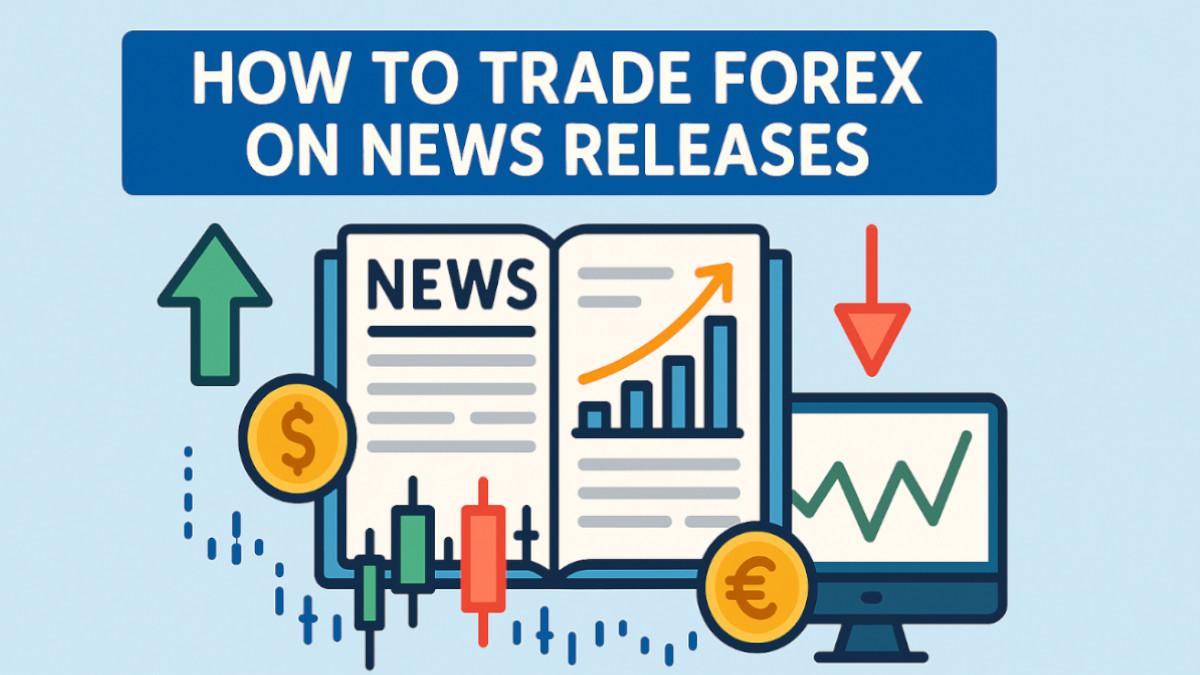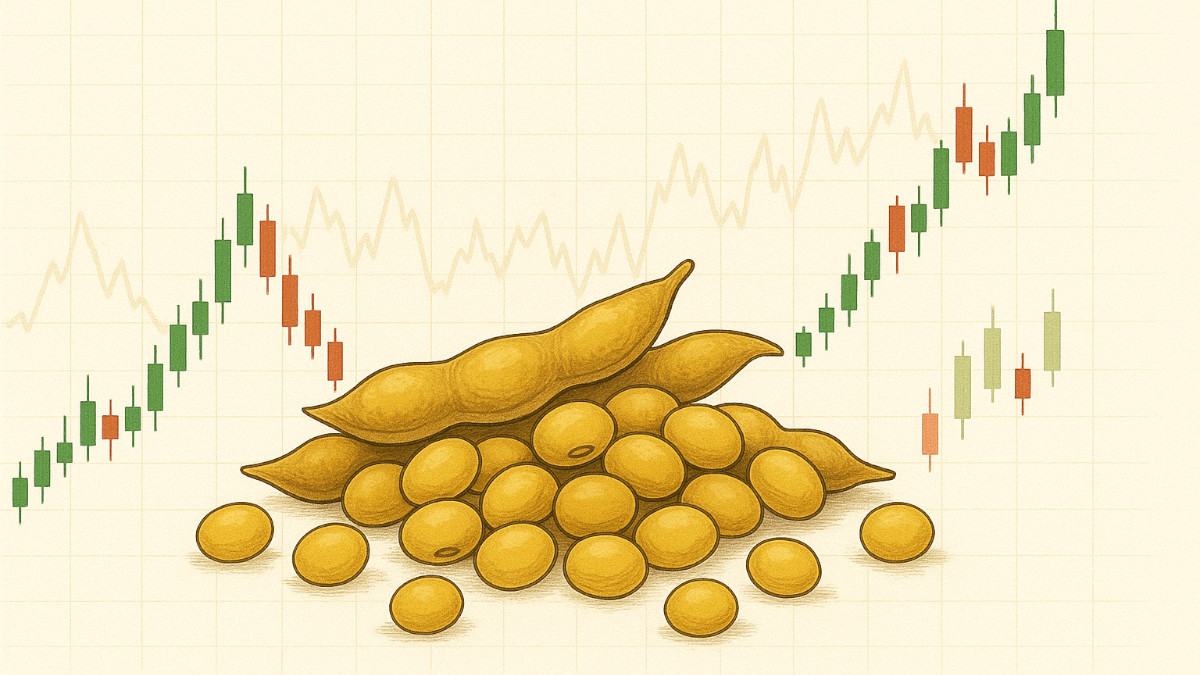- Analytics
- Trading News
- How to Trade Forex on News Releases
How to Trade Forex on News Releases

Why News Moves the Forex Market.
In forex, prices move because of new information, more precisely, economic news. Reports on inflation, jobs, interest rates, or trade balances can change how investors view a country’s economy. That changes how they value its currency. Forex runs nearly 24 hours a day (from Sunday 5 p.m. to Friday 5 p.m. ET). That means economic news from almost any major country can affect price, day or night.
Key Takeaways
- News drives short-term currency movements.
- U.S. news has the biggest impact because the U.S. dollar is involved in 88% of forex trades.
- Many traders look for price consolidation before a big release, and trade the breakout afterward.
- Exotic options let you trade breakouts with less risk of reversal.
Currencies You Should Focus On
Most news trading strategies focus on major currency pairs, which are highly liquid and widely traded:
- EUR/USD
- USD/JPY
- GBP/USD
- USD/CAD
- AUD/USD
- EUR/CHF
These pairs are highly responsive to economic data from their respective countries.
When News Is Released
| Country | Currency | Time (ET) |
|---|---|---|
| U.S. | USD | 8:30 – 10:00 a.m. |
| Japan | JPY | 6:50 – 11:30 p.m. |
| Canada | CAD | 7:00 – 8:30 a.m. |
| U.K. | GBP | 2:00 – 4:30 a.m. |
| Germany | EUR | 2:00 – 6:00 a.m. |
| France | EUR | 2:45 – 4:00 a.m. |
| Italy | EUR | 3:45 – 5:00 a.m. |
| Switzerland | CHF | 1:45 – 5:30 a.m. |
| Australia | AUD | 5:30 – 7:30 p.m. |
| New Zealand | NZD | 4:45 – 9:00 p.m. |
| South Africa | ZAR | 4:00 – 5:30 a.m. |
Knowing when data comes out helps you prepare for possible volatility.
What Types of News Move Markets
Not all economic news matters equally. The most impactful reports usually relate to:
- Interest rate decisions (e.g., Fed, ECB, BoE)
- Inflation (Consumer Price Index or Producer Price Index)
- Unemployment rates
- Retail sales
- GDP (economic growth)
- Industrial production
- Consumer or business sentiment surveys
- Trade balances
- Manufacturing activity report
The impact of any news release on the market is different, depending heavily on what the market is focused on at the time. Traders' attention shifts based on the bigger economic picture.
Take the period after COVID; during that time, inflation rose and Federal Reserve began raising interest rates aggressively. As a result, markets became extremely sensitive to inflation numbers, interest rate decisions, and any hint about future monetary policy. A small surprise in inflation data or a comment from a central banker could move markets drastically.
Compare that to 2019, before the pandemic inflation was low and stable, and interest rates weren’t the primary concern. Instead, investors paid more attention to job numbers and GDP growth because those were better indicators of where the economy was heading. Employment reports or quarterly GDP releases had more influence on market direction than inflation data did at the time.
The same type of news, say, a jobs report or a CPI release, can have very different effects depending on what traders care about in the current environment. That’s why it’s important not just to know what news is coming, but also to understand the bigger themes driving the market.
How News Drives a Trade
In the hours leading up to the June 2024 U.S. retail sales report, the EUR/USD currency pair was moving within a very narrow range. This sideways movement (consolidation), suggested that traders were waiting for the news before committing to a direction.
When the report was released, the data surprised the market. Retail sales for the month came in flat, showing 0.0% month over month growth, which was significantly better than the expected 0.3% decline. On top of that, the previous month’s numbers were revised upward. Traders responded quickly by buying US dollars, pushing the EURUSD pair down sharply. The drop exceeded 250 pips, large move compared to the 70-pip range seen just before the news.
However, the reaction didn’t last. Within 24 hours, the dollar gave back its gains, and the euro recovered, even rising further. This showed that while economic news can spark strong short-term moves, it doesn’t always shift the overall market direction unless it alters the broader economic outlook.
How Long Does News Affect the Market?
A study published in 2005 by Martin D.D. Evans and Richard Lyons found that news tends to have its biggest impact on returns during the first two days after a release. However, the flow of buying and selling remains elevated for up to three or four days afterward. This means that while markets can react quickly, the ripple effects of major news often linger, especially when the data changes how traders think about future interest rates or economic growth.
A Practical Way to Trade News
One straightforward approach to trading news starts by observing how a currency pair behaves in the hours leading up to a major economic release. Often, prices enter a holding pattern, moving sideways in a narrow range as traders wait for the news to hit. This phase is called consolidation, and the range might be something like 50 to 100 pips wide.
During this quiet period, you can plan your trade by identifying the key price levels that define the range. If the price breaks above the top of the range once the news is out, it can signal an opportunity to buy. If it drops below the lower end, that may be a signal to sell. To protect against sudden reversals, it’s important to place a stop loss order just beyond the opposite side of the range.
When the data is released, pay close attention to how it compares to market expectations. The headline figure is important, but it’s not the only thing that matters. Revisions to previous data can be just as influential, especially if they significantly change the picture. Also consider the whisper numbers, unofficial expectations passed around by traders. If the actual result beats the published forecast but falls short of the market’s whisper number, the reaction might be surprisingly muted. Being aware of all these factors can help you respond to the market with better timing and judgment.
- What Are Whisper Numbers?
Whisper numbers are unofficial forecasts that are basically, what traders really expect to happen. For example, if the official forecast says 0.2%, but the market is whispering 0.5%, then even a 0.3% result might disappoint traders. These whispers are not published, but experienced traders often track sentiment from analysts or social media.
Trading With Exotic Options
If you're concerned about getting caught in a false breakout or a quick price reversal after a news release, exotic options offer a way to trade the expected volatility without needing to predict the exact direction of the move. These are structured financial products with fixed payouts based on whether certain price levels, barriers, are reached before the option expires.
One type is the double one-touch option. This option sets two barrier levels: one above and one below the current price. If the market touches either of these levels before the expiration time, the payout is triggered. It doesn’t matter which direction the price moves, just that it moves far enough to hit one of the barriers. This is useful when you’re confident that a news release will cause a sharp move but you're not sure if it will be up or down.
Another variation is the one-touch option, which has only a single barrier level. You earn the payout only if that specific price level is hit before expiration. This type is more directional. It's a better choice if you believe the news will strongly beat or miss market expectations and cause the price to move in a particular direction.
The opposite approach is the double no-touch option. It also has two barrier levels, one above and one below the current price, but in this case, you only get paid if neither level is breached before expiration. This kind of option suits traders who believe that a news release won’t have much impact and that the currency pair will stay within a defined range.
Bottom Line Is
To succeed you’ll have to
- Know when reports are released
- Understand which data points matter
- Watch market expectations, not just actual numbers
- Manage risk with stops or structured products
- Learn how your chosen pairs usually react to different types of news
Use demo accounts to rehearse your plan, and focus on learning how the market moves, don't do it blindly.







